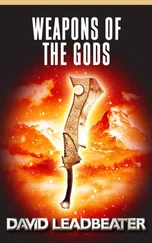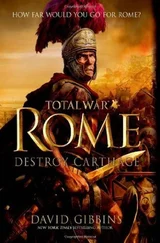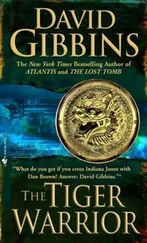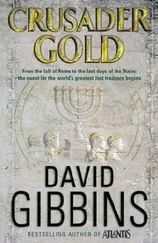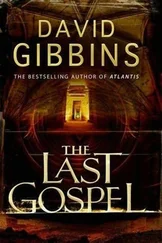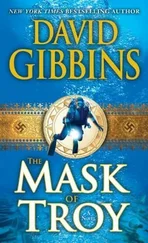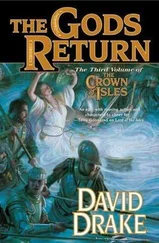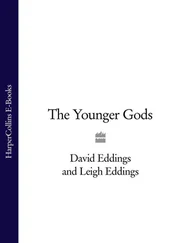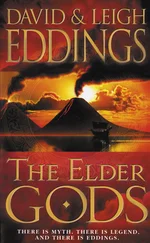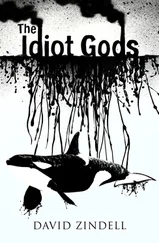David Gibbins - The Gods of Atlantis
Здесь есть возможность читать онлайн «David Gibbins - The Gods of Atlantis» весь текст электронной книги совершенно бесплатно (целиком полную версию без сокращений). В некоторых случаях можно слушать аудио, скачать через торрент в формате fb2 и присутствует краткое содержание. Жанр: Прочие приключения, на английском языке. Описание произведения, (предисловие) а так же отзывы посетителей доступны на портале библиотеки ЛибКат.
- Название:The Gods of Atlantis
- Автор:
- Жанр:
- Год:неизвестен
- ISBN:нет данных
- Рейтинг книги:3 / 5. Голосов: 1
-
Избранное:Добавить в избранное
- Отзывы:
-
Ваша оценка:
- 60
- 1
- 2
- 3
- 4
- 5
The Gods of Atlantis: краткое содержание, описание и аннотация
Предлагаем к чтению аннотацию, описание, краткое содержание или предисловие (зависит от того, что написал сам автор книги «The Gods of Atlantis»). Если вы не нашли необходимую информацию о книге — напишите в комментариях, мы постараемся отыскать её.
The Gods of Atlantis — читать онлайн бесплатно полную книгу (весь текст) целиком
Ниже представлен текст книги, разбитый по страницам. Система сохранения места последней прочитанной страницы, позволяет с удобством читать онлайн бесплатно книгу «The Gods of Atlantis», без необходимости каждый раз заново искать на чём Вы остановились. Поставьте закладку, и сможете в любой момент перейти на страницу, на которой закончили чтение.
Интервал:
Закладка:
The Neolithic evidence has drawn in archaeologists of earlier prehistory who have long pondered the significance of cave art, and have come to believe that Palaeolithic religion may have involved practices similar to those of the shaman or ‘seer’ in hunter-gatherer societies recorded by anthropologists. Using techniques such as repetitive chanting and sensory deprivation – as well as hallucinogenic drugs – shamans could achieve a trance-like state comparable to that of worshippers during intensive acts of devotion to a god. The similarity of these experiences has led scientists to suggest that they have a common neuropsychological basis, that they are ‘hard-wired’ into the brain as the sensations of altered consciousness. Common sensations include being in a vortex or a tunnel, floating in water, and visions of an upper and a lower world, the basis for the tiered cosmology of heaven, earth and hell common to many religions. Just as devout believers can ‘see’ divinity all round them, so those who believe in a spirit realm can partly inhabit that world in their day-to-day lives; belief alone may be enough to propel them into a state of altered consciousness. This is what archaeologists mean when they talk of getting inside the prehistoric mind: trying to see the world in a way that is unfamiliar to many today who are not believers in the supernatural. In a prehistoric world where there may have been less fear of being ‘out of control’, the pleasure of surrendering to hallucinogenic experiences was also a factor. The strength of early religion – the draw to its participants – may have been these altered-consciousness experiences in which the voyage in the mind was more important than the destination, in a belief system that did not revolve around the worship of gods or reward for devotion with a favoured place in the afterlife.
How and why this type of belief system may have changed into the new religion seen at Gobekli Tepe, with its temple-like structures, is a matter for speculation. Earlier religious experience may have been inclusive, with access to the spirit world open to everyone, as reflected in its survival in the houses at Catalhoyuk; rather than being fixed to particular sites, religious practice may have been ‘portable’, involving sacred stones such as meteorites hinted at in the earliest foundation myths of the Bronze Age, noted below. The establishment of fixed sites for ritual may have come about during periods when the glaciers had receded and people were able to remain in one area for generations, particularly at the time of the first cave art in southern Europe and then after the end of the last Ice Age. That period, after about 10,000 BC, gave the ecological stability for long-term settlement that allowed the process to go further than it ever had before. Fixed places of ritual may have become increasingly exclusive, the preserve of shamans or priests empowered by their sway over increasingly large groups of hunter-gatherers who had begun to live in semi-permanent settlements. A new breed of priests may have been the first to exert authority over communities larger than kinship groups, and may have been behind the first communal endeavour in the building of ‘temples’ and then the organization of towns, agriculture and animal husbandry that were needed both to sustain the religious sites and to maintain and control population in one place.
The new religion
As people moved from ‘wild’ to ‘civilized’, as ‘man made himself ’ – in another memorable phrase of Gordon Childe – we may see the first glimmerings of anthropomorphic gods. Ancestors who had been sought in the spirit world became ancestors who were venerated, and permanent sites of ritual meant that specific ancestors could be remembered in association with a particular place. The altered consciousness of the voyage to the spirit world was transferred to piety and worship, so that the religious experience remained similar even if the belief had changed. In looking at the crucial step from venerating ancestors to the creation of named gods, it is impossible not to see deliberate human agency at work, driven by the psychology of power and control. The faceless pillars of Gobekli Tepe and Nevali Cori may represent the very threshold of the gods, not the result of a gradual process but an act of creation by a group of ambitious priests.
Veneration can quickly change to awe and fear, and the tiered cosmology of the old spirit world transmutes into heaven and hell – where people are trapped between fear of hell and a need to fulfil the requirements of reaching heaven. These changes were reflected in dramatically evolving lifestyles, from the unpredictability and excitement of the hunter-gatherer to the tedium and toil of the agriculturalist, where the new priesthood could present the promise of a better afterlife as a goal. It was these priests whose descendants would be the first kings, and it was they who were responsible for the birth of modern religion; the first acts of worship may in truth have been the first acts of obeisance to a new class of priest-kings. To paraphrase Gordon Childe, man not only made himself; he also made his gods.
The move from the natural world to a man-made world may also be seen on a much grander scale in a shift from sacred caves and mountains to burial mounds and pyramids. Whereas the ‘old’ religion may have carried on into the Neolithic in the private context of houses – much as older rituals were to do in later periods, for example in the continuance of pagan worship in Christian times – the new religion was focused on monumental sites such as Gobekli Tepe, which took over the function of caves and mountains as the focus for communal religious activity. The manipulation of belief by a new breed of priests may be the beginning of the tension between centralized, state-controlled religion and private belief and ritual, something I explored with early Christianity in my novel The Last Gospel. Throughout history this tension has been the cause of bloody persecution and conflict, and the possibility that this can be traced back to a violent dislocation at the dawn of civilization is suggested by the disturbing nature of the rituals revealed in the archaeological evidence, another part of the extraordinary revelation of the ‘new’ Neolithic.
Altered-consciousness visions
A common altered-consciousness experience is of travelling through a tunnel or vortex; the interpretation of this vision as a ‘portal’ into the spirit world may be seen in the swirling spirals of Neolithic rock art, and in the circular shape of prehistoric monuments ranging from Gobekli Tepe and Stonehenge to the huge concentric earthworks of prehistoric Britain. The strange swirling shape seen by Jack on one of the monoliths in Atlantis is inspired by a carving on a stone inside the Neolithic passage tomb at Knowth, Ireland, dating from the fourth millennium BC, believed by some to represent a face and by others to be a chance arrangement of circular and semicircular motifs. Although Knowth and the other ‘Megalithic’ sites of western Europe date four or five millennia after the earliest Neolithic sites of the Near East, they may represent societies at a comparable stage of development with similar belief systems, including rituals based on altered-consciousness experiences and the use of rocks and underground places as portals into the spirit world.
Human sacrifice
The stone basins in the inner sanctum of Atlantis in this novel were inspired by several beautifully decorated basins from the Irish passage tomb at Knowth, where they have been interpreted as receptacles for cremated remains or as water basins that may have been windows into the spirit world. At the Anatolian site of Cayonu, a stone basin was found with possible traces of human blood on its rim, the inspiration for Jack’s idea that the basins may have been filled not with water, but with human blood. Another structure at Cayonu known as the ‘House of the Dead’ contained a flat stone with residues of human blood, as well as aurochs and sheep blood; and yet another building held a slab decorated with a carving of a human head, also with traces of human blood. Beneath the House of the Dead were no fewer than sixty-six human skulls and bones from four hundred additional people. A disproportionately large number of the skulls were from young adults, male and female, suggesting that they may have been selected for killing. The possibility that human sacrifice was widespread is suggested by finds at Catalhoyuk, where infants were found buried under the thresholds and in the walls of houses, and at Jericho, where several infant skulls were found with vertebrae still in place, showing that the heads had been cut from intact bodies rather than taken from skeletons. At Cayonu, one of the most telling finds was a long flint knife with traces of human blood on the blade, suggesting that the obsidian blades found in cached deposits in houses at Catalhoyuk – long thought to have some symbolic meaning – may well have served this chilling function.
Читать дальшеИнтервал:
Закладка:
Похожие книги на «The Gods of Atlantis»
Представляем Вашему вниманию похожие книги на «The Gods of Atlantis» списком для выбора. Мы отобрали схожую по названию и смыслу литературу в надежде предоставить читателям больше вариантов отыскать новые, интересные, ещё непрочитанные произведения.
Обсуждение, отзывы о книге «The Gods of Atlantis» и просто собственные мнения читателей. Оставьте ваши комментарии, напишите, что Вы думаете о произведении, его смысле или главных героях. Укажите что конкретно понравилось, а что нет, и почему Вы так считаете.

